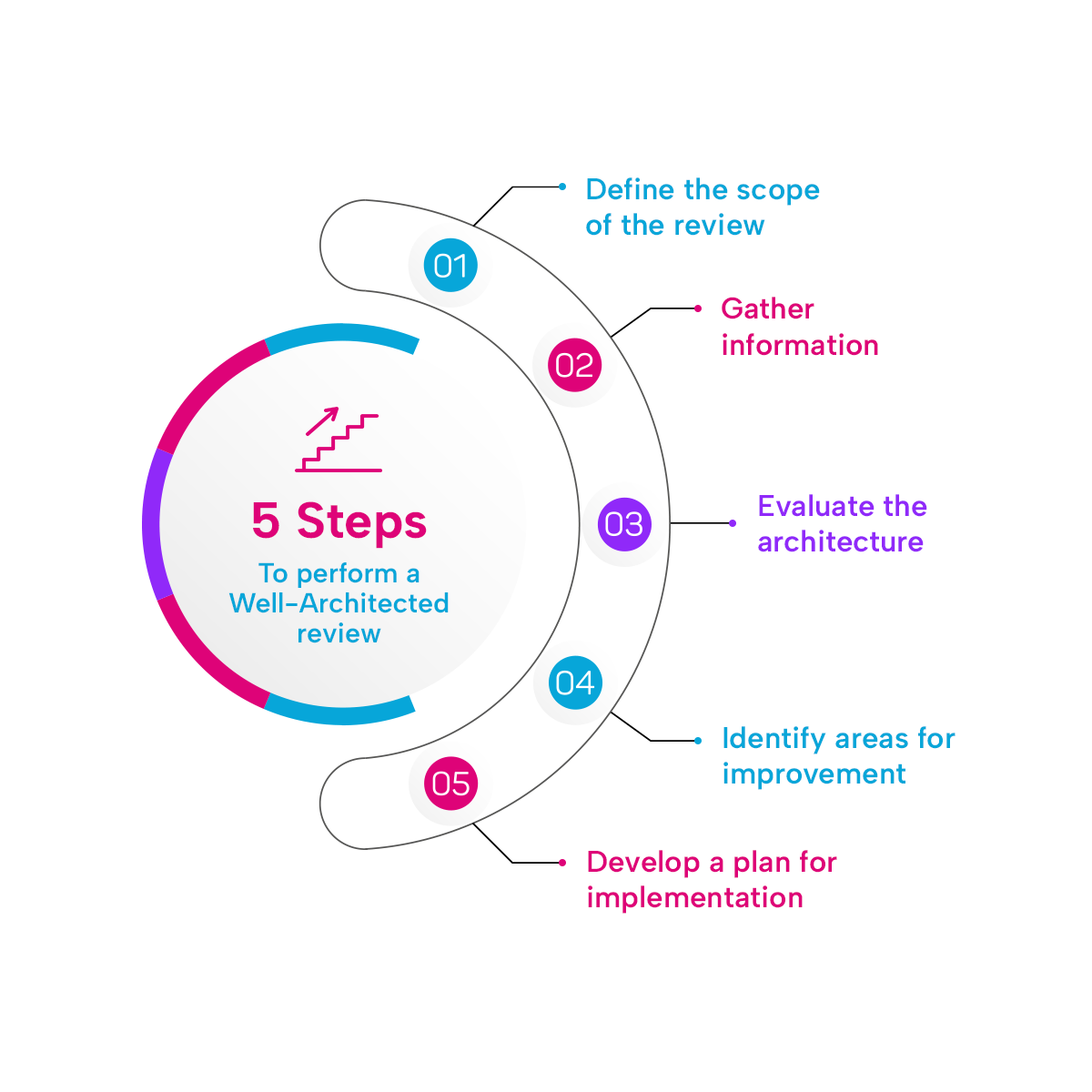Cloud well-architected review
By Khushi Carpenter, Manan Goradiya / Jul 05,2022
CLOUD WELL-ARCHITECTED REVIEW
"For systems that are built to last, The Well-Architected Framework is a blast."
This article will aid you to align your architectural decisions to cloud best practices.
WHY OPT FOR CLOUD WELL ARCHITECTED REVIEW:
Cloud Well-Architected review enables you to learn about the benefits and drawbacks of decisions you make when developing the systems on the cloud. The well-architected framework prepares you on the best practices to design & operate reliable, secure, cost-optimized, and sustainable cloud environments. It also provides a roadmap to constantly compare the architectures to the best practices and pinpoints the areas for refinement with the help of various Well-Architected tools available from different cloud providers as well as third-party tools.
The review process is not a scrutinizing mechanism, rather it focuses more on the architectural choices you make. It’s more like having a dot-perfect approach that leads towards the journey of excellence. Hence, the purpose of the review is to uncover any vulnerabilities in the architecture and suggest suggestions for optimization.
PILLARS OF WELL-ARCHITECTED FRAMEWORK:

Operational Excellence: This pillar is about making sure the system bounces back from any hiccups and always has enough power to keep up with what is needed. It's about a smart design that can handle problems, a fast recovery that happens automatically, and the power to fix itself!
Security: The aim of this pillar is to secure information, systems, and assets while still maintaining the businesses productivity through proper risk management. This involves following certain guidelines such as establishing a solid identity base, guarding data, and maintaining secure network designs.
Reliability: The emphasis of this pillar is on the system's resilience and its capability to recover from failures while also acquiring the necessary computing resources as required. This encompasses concepts such as creating a failure-resistant design, automating recovery mechanisms, and incorporating self-healing features.
Performance Efficiency: The emphasis of this pillar is on making the most effective use of computing resources to meet system requirements and avoid any unnecessary wastage. This involves adhering to principles such as employing auto-scaling to manage resources dynamically, using cost-efficient storage options for data storage, and optimizing computing workloads to reduce latency.
Cost Optimization: This pillar focuses on reducing or minimizing any unnecessary expenses associated with operating and utilizing systems. This encompasses principles such as utilizing managed services to decrease operational burden, maximizing resource utilization, and monitoring usage to identify cost-saving opportunities.
"The five pillars of the well architected frame, Will keep your systems running and reduce any blame."
REVIEW PROCESS:
The procedures that can be executed to perform a well-architected review of your organization's cloud infrastructure include:
- Define the scope of the review: Identify the targeted goals and areas of emphasis for the review. For instance, one objective could be to construct a robust and secure architectural design.
- Gather information: Gather relevant data and information, such as architecture diagrams.
- Evaluate the architecture: Review the design and operational aspects of the cloud solution against the five pillars of cloud computing.
- Identify areas for improvement: Discover any potential architectural flaws and provide suggestions for enhancement.
- Develop a plan for implementation: Create a plan for carrying out the suggested improvements from the evaluation for the ultimate deployment.

CONCLUSION:
A Cloud Well-Architected Review is an essential tool for organizations that are looking to maximize the benefits of cloud technology while minimizing risks. The review provides a comprehensive assessment of your cloud infrastructure & services and provides recommendations on how to improve their design & deployment. By conducting a Well-Architected review, organizations can ensure that their cloud infrastructure & services are secure, reliable, efficient, operationally excellent, and cost-effective.




